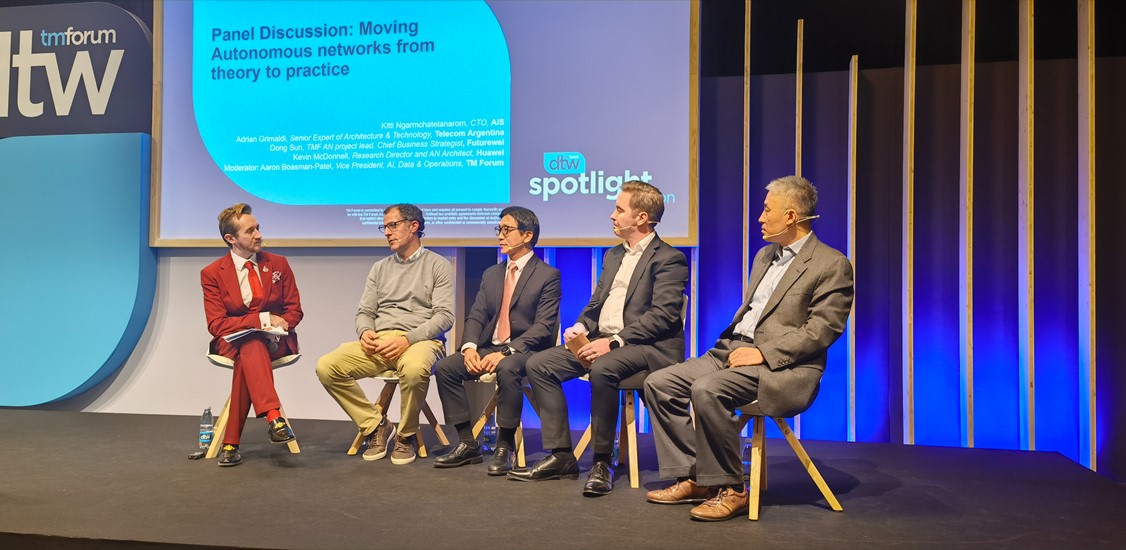At DTW 2022's Autonomous Networks Leadership Forum, three operators, namely MTN Group, AIS in Thailand, and Telecom Argentina (TA), shared their thoughts and practices on the topic of "How autonomous networks can pave the way for the automation of intelligent networks". Huawei, as a vendor, also weighed in.
5G deployments have led to the consistent scaling of networks, the co-existence of legacy and new devices, and the convergence of 2G, 3G, 4G, and 5G, which makes networks, services, and O&M more complex than ever before. Network O&M upgrade has become a necessity for operators. Statistics show that the total number of global connections may reach 200 billion by 2030, as networks will evolve from not only connecting tens of billions of people, but also hundreds of billions of things. New services such as next-generation human-machine interaction (AR/VR/XR), integration of housing and transportation, industrial interconnection, satellite broadband interconnection, and AI computing, will emerge and raise new requirements for network connections. All this sets the direction of network development, i.e., a stereoscopic ultra-broadband and green network featuring native intelligence, security & trustworthiness, deterministic experience assurance, and integrated sensing and communication.
In recent years, to improve O&M efficiency and boost business growth, global telecom operators have been actively exploring their own ways to network automation and intelligence by building Autonomous Networks (AN).
During the meeting, Kitti Ngarmchatetanarom, CTO of AIS, pointed out that traditional telecom providers are facing difficulties such as slow revenue growth, ARPU pressure, and profit challenges. To provide real-time, interactive, and personalized services and network operations, they desperately need technological innovation and digital transformation. So far, AIS has carried out a comprehensive evaluation of Autonomous Network levels (ANLs) and business values in the wireless network, transmission network, core network, and service domains. AIS will strive to achieve L4 AN by 2025.
MTN is a leading operator in Africa. The premise of its "Ambition 2025" strategy is based on leading digital solutions for Africa's progress. During this year's DTW, Mohamed Salah, Senior O&M Manager of MTN Group, shared their latest progress in AN. In addition to ANL evaluation and target AN architecture, MTN continuously innovates its application scenarios. At present, it has piloted and promoted 10+ innovative topics in a plurality of subsidiaries. Prominent examples include improving O&M efficiency by means of intelligent network O&M and delivering better customer experience via a congestion-free IP network.
Adrián Grimaldi, Senior Expert of Architecture & Technology from Telecom Argentina (TA), also shared TA's digital transformation practices. With many years of network O&M experience, TA put forward this insight: The next decade will be the golden decade for AN. More and more operators and enterprises will focus on building Self-X network capabilities and achieving Zero-X customer experiences.
Representing the vendors who attended the forum, Huawei has accumulated abundant experience in the AN industry over the past few years. Epitomizing this experience is ADN. Marvin Liu, Huawei ADN Industry Marketing Director, said that ADN is designed to leverage both connectivity and intelligence to build a self-fulfilling, self-healing, and self-optimizing autonomous network. It helps operators deploy self-serving, self-fulfilling, and self-assuring capabilities, and deliver a Zero-X (zero-wait, zero-touch, and zero-trouble) experience to both individual consumers and public sector and enterprise customers. ADN can also help operators reduce network O&M costs and improve service quality.
It is reported that TM Forum will release AN Whitepaper 4.0 in the near future. As a collection of contributions from more than 50 global members (including 20+ operators), the Whitepaper will include a clearer AN vision, strategy, and evolution path for operators, specify a set of clear AN standards in five directions to facilitate collaboration between standards organizations, and build a methodological framework centered on "four AN elements".
AN is no longer just a theory and strategy, but a reality that is available to implement. We can foresee AN entering a high-speed phase of development.




















